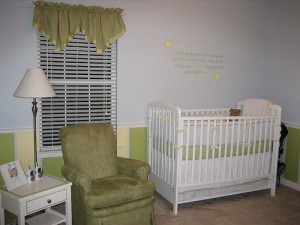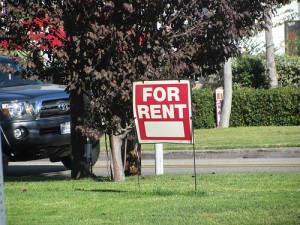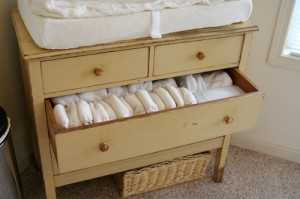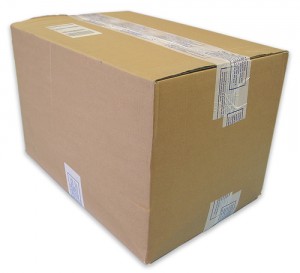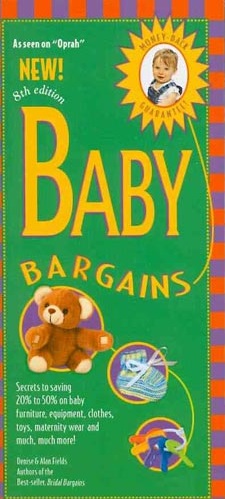 When I started researching big baby items like cribs and car seats, several moms recommended that I invest in Baby Bargains (affiliate link) by Denise and Alan Fields. They’re the parents of two children who want to help new moms sort through the marketing jargon and mommy guilt to find the best, safest baby gear at the most affordable prices possible. Sounded right up my alley!
When I started researching big baby items like cribs and car seats, several moms recommended that I invest in Baby Bargains (affiliate link) by Denise and Alan Fields. They’re the parents of two children who want to help new moms sort through the marketing jargon and mommy guilt to find the best, safest baby gear at the most affordable prices possible. Sounded right up my alley!
It wasn’t available at my library, so I went ahead and ordered it on Amazon for about $12. I figure I can pass it along to another expectant mom when I’m done to score some good karma points. (Stay tuned, I may even host a giveaway when I’m finished shopping.) It arrived yesterday, and after flipping through some of the main chapters, I am definitely impressed.
Aside from some pretty common sense money-saving tips (“Just because your store’s registry checklist recommends it doesn’t mean you need it!”), the book’s most useful sections are reviews of brands and specific products based on interviews with real parents, safety ratings, and value.
Because recalls and safety recommendations change so frequently, the publisher has issued 8 different editions to update. The version I have was published this year, and the cribs section even mentions the recent recalls of drop-side cribs (though it doesn’t appear they’d been taken off the market completely at press time).
It’s also worth noting that a disclaimer at the beginning of the book states that “Baby Bargains” is ad-free, and no manufacturer or brand paid any money to receive an endorsement. The authors’ recommendations are based solely on their own findings after extensive research and interviews with real parents. I like that!
When I cracked open the book, the first thing I read was the chapter on cribs. I’ve been struggling with whether I should go ahead and get an inexpensive off-brand crib or invest in a pricier high-end brand. I was happy to see that the authors confirm what I already suspected — all cribs sold in the United States adhere to the same basic safety guidelines, which change so frequently that even the most expensive, highly rated crib could be recalled within a year. So price and safety have absolutely no relationship.
What does matter, though, is the specific brand’s safety ratings and track record. The book includes a huge list of crib brands, and I was surprised to see that many of them were the off brands I was considering.
Unfortunately, the crib I’d tentatively chosen (an off-brand tied to baby furniture manufacturers Dorel), received a big fat F. Apparently, the company sells cribs under a long list of brand names because they’ve been plagued with so many recalls and safety issues in their history, including a massive recall in 2008 that resulted in 320,000 cribs being taken off the market. So yeah. No amount of money saved is worth the risk.
I hunted around and found another nursery furniture set for roughly the same price, only its manufacturer (Nursery 101, a subsidiary of LaJobi) received an A-. Much better. After reading the reviews, I can now order my value crib with confidence.
I haven’t had a chance to read the rest of the chapters in depth, but after thumbing through, I’m sure I’ll find a wealth of information about the other items I need.
My only beef so far? Their chapter on diapers compares the cost of the most expensive cloth diapering methods possible (diaper service and pricey diapers) with disposables. I don’t think this is a fair comparison since the difference between a diaper service and laundering at home is so drastic, but whatever.
They also only discuss the savings in the first year with no mention of the fact that disposables will cost close to the same amount in the second year while the second year in cloth will cost drastically less depending on your system. Methinks the authors are disposable loyalists. But they do include extensive information on different types of cloth diapers and even laundering tips from seasoned cloth diaperers, so I can’t complain too much.
If you can find a copy at your library or even buy one yourself, I definitely recommend it.

